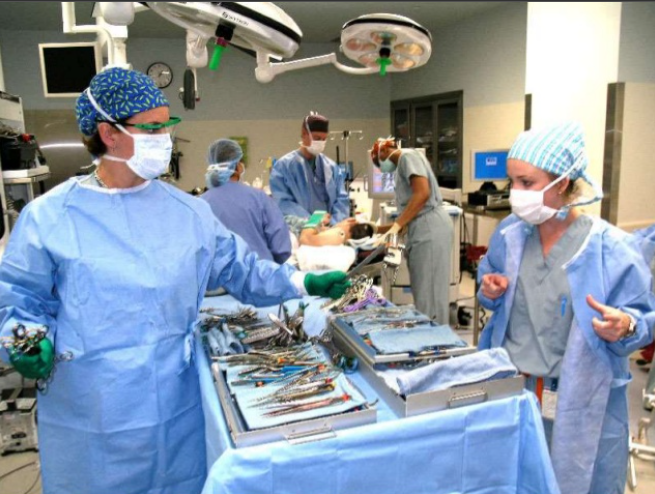Perioperative Care of Neurological Patients
Introduction
Neurological patients tend to be older and sicker.
As the population ages, the number of elderly patients with comorbid neurological conditions undergoing various surgical procedures is increased.
Neurological patients are at an increased risk for perioperative cardiac and pulmonary complications after surgery.
The secondary complications of neurological diseases such as aspiration pneumonia, respiratory difficulties, electrolyte abnormalities, autonomic dysfunction, and muscle weakness can adversely influence outcome.
Neurological comorbidity in patients candidate for surgery is a main reason of consultation with a practicing neurologist.
A thorough clinical approach helps:
1. Determine the cause and extent of the patient’s condition
2. Ensure that the patient’s comorbid conditions are under appropriate medical therapy, especially prior to elective procedures
3. Stratifying perioperative risk or contraindication
4. Determining if further tests, consultations or treatments are needed
5. Planning the most appropriate management
6. Choose of anesthetic agents and techniques
7. Diagnose pseudoexacerbation of underlying neurological disorder by superimposed systemic problem or stress of surgery
8. Decide if chronic medications should be continued in the perioperative period
The main aim of this approach is to reduce perioperative morbidity and mortality.
Perioperative Physical Examination
1. Assessing the cardiovascular system and airway is essential.
2. Special attention should be paid to the cervical spine; an unstable cervical spine, limited neck movements, and cervical cord compression are not uncommon in neurological and neurosurgical patients, especially after traumatic injuries.
3. These patients may require cervical immobilization or in-line traction during intubation or fiberoptic intubation.
4. A complete neurological examination is required to assess the patient’s preoperative baseline neurological status.
5. The severity of presenting neurological deficits in these patients could determine the degree of surgical urgency.
6. Patients with a preoperative GCS < 9 are more prone to develop hypoxia and hypercarbia, which may lead to elevated intracranial pressure. These patients should be ventilated and stabilized prior to surgery.
Preoperative Investigations
1. Routine lab tests
2. ECG
3. Slective preoperative neurological tests, when needed, are ordered according to the type of planned surgery and the patient’s clinical situation
Medications
1. Medications for chronic pain should be continued as normal in the perioperative period as this will help to achieve postoperative pain and blood pressure control
2. Most antihypertensive and antiarrhythmic agents should be continued without interruption throughout the perioperative period. A sudden cessation of antihypertensives, especially clonidine and guanfacine, should be avoided to minimize the danger of rebound hypertension. The exception is ACE inhibitors and ARBs, which should be stopped on the day of surgery because their use can be associated with refractory intraoperative hypotension
3. Oral hypoglycemics should be held before surgery and substituted with sliding-scale insulin
4. Metformin (associated with lactic acidosis), should be discontinued at least 1 day prior to surgery and restarted 2 to 3 days postoperatively after testing for renal function
5. A large number of neurological patients are on antithrombotic therapies for secondary stroke prevention or NSAIDs for pain. Some advocate that NSAIDs be discontinued 2 to 3 days preoperatively to minimize the risk of intraoperative bleeding. However, continuation of NSAIDs throughout most nonneurosurgical procedures is likely safe
6. Oral anticoagulation with warfarin should be withheld 5 to 6 days before major invasive and neurosurgical procedures. The time off anticoagulation should be minimized in patients at high risk for thromboembolic complications. Bridging therapy with heparin or heparinoids after discontinuation of warfarin and early reinitiation of postprocedure anticoagulation in these patients is advised as soon as the risk of bleeding from the surgical site is minimal. Heparin may be stopped a few hours preoperatively and restarted after surgery. Continuation of warfarin during surgery is likely safe in cutaneous surgeries, dental extractions and other limited oral procedures, and diagnostic, but not invasive, endoscopy or colonoscopy
7. Patients treated with steroids prior to surgery may require steroid supplementation during the perioperative period. Patients undergoing minor surgery should take 1.5 to 2 times their usual dose on the morning of surgery and the normal dosage the following day. In case of a prolonged surgery, an additional dosage may be given perioperatively. Those undergoing major surgery should take 2 times their usual dosage preoperatively, receiving additional intravenous hydrocortisone during surgery and postoperatively, and resume the normal dosage within 48 to 72 hours.
General Measures
1. The use of long-acting sedatives should be avoided, whenever possible, to facilitate assessment of neurological status throughout the perioperative period
2. Neurological patients, particularly those with stroke, spinal injury, and brain tumors, are at increased risk for developing deep vein thrombosis (DVT)due to prolonged immobility, leg weakness, and secondary hypercoagulability states
3. It is important to start DVT prophylaxis preoperatively and continue until the patient is mobilized after the surgery
4. It is important to correct dehydration preoperatively, especially in patients taking diuretics or edema-lowering agents such as mannitol or hypertonic saline, to maintain adequate cerebral perfusion during the perioperative period
5. If any patient develops a new neurologic problem or an exacerbation of an existing one, elective surgery should be delayed until the issue can be managed properly
Anesthetic Considerations
1. Avoid seizure-promoting drugs
2. Prophylactically treat seizure activity by using GABA agonists when possible (e.g., benzodiazepines, propofol, thiopental)
3. Provide analgesia using opioids
4. Prevent coughing
5. Maintain with 1 MAC (minimal alveolar concentration) inhalant
6. Monitor end-tidal or arterial carbon dioxide tension
7. Monitor arterial blood pressure
8. Ensure hypercapnia is prevented by using appropriate mechanical ventilation
9. Avoid malpositioning the patient such that venous drainage of the head is impaired
10. Type of anesthetic modality depends to clinical setting and type of procedure

